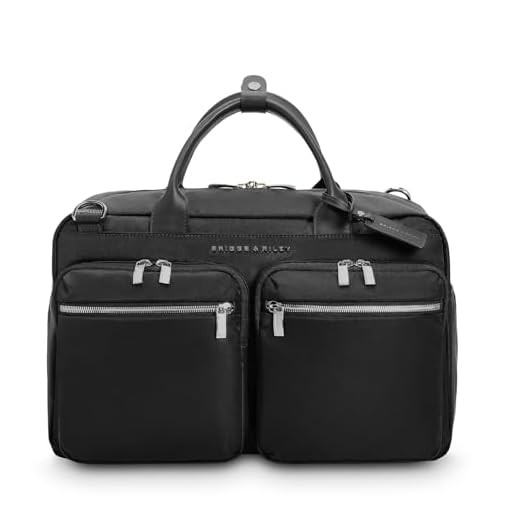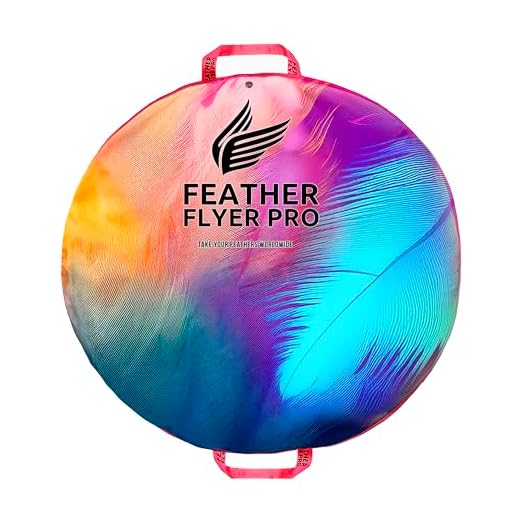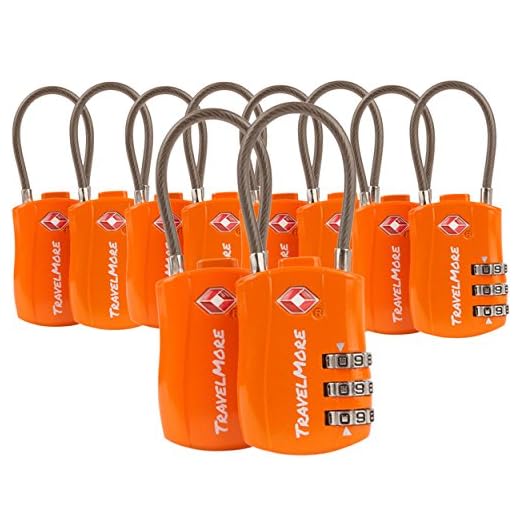







Recommendation: travel with no more than three items per person – one cabin bag sized up to 55×40×20 cm and up to two larger suitcases that fit the end-of-carriage racks (suggested maximum 85×55×35 cm). Keep individual items under 25–30 kg for safe handling and easy stowage.
Store small cases on the overhead shelf above seats; those shelves typically accept dimensions similar to the cabin-bag guideline above. Place full-size suitcases in the dedicated luggage bays at each carriage end or in the open zones between doorways. Fold pushchairs and compact stowables fit under seats or on overhead racks; full-size bicycles generally require prior reservation or a special carriage option.
Practical handling: arrive 20–30 minutes before departure to secure space for large bags, load heavy items into end bays first and slide them in lengthwise, and keep valuables and travel documents in your cabin bag. Label every piece with name and contact details and keep the booking reference on your person – there is no formal checked-bag desk on standard high-speed departures, so carriage and retrieval remain passenger responsibility.
Fees and exceptions: standard carriage of typical suitcases and cabin bags is included in the ticket price on most SNCF high-speed services. Oversized sports equipment, full bicycles or pallets may require an advance reservation and a supplement (typical supplement range for reserved bicycle space: about €10–€20, depending on route and service). If transporting unusually large or heavy freight, use a specialised parcel or courier option rather than bringing items aboard the passenger train.
Baggage rules and on-board storage for French high-speed services
Bring one cabin bag (recommended max 55×35×25 cm) plus a personal item; place the cabin bag on the overhead shelf or under the seat and keep the personal item at hand. Store larger roller cases vertically in the end-of-carriage racks closest to the doors so they don’t block aisles.
There are no universally enforced weight limits on these services, but practical constraints apply: if a single item exceeds 30 kg or measures more than about 160 cm linear (length+width+height), arrange carriage or freight alternatives. Bikes, surfboards and oversized sports gear usually require advance reservation or a supplement–check the operator’s special-article rules before travel.
Label every bag with name, phone number and destination; use a brightly colored strap or tag for fast retrieval. Keep passports, medication, electronics and cash in the personal item. If lifting assistance is necessary, request platform staff help in advance; crews rarely assist with repeated heavy lifting onboard.
| Item type | Recommended max size | Store where | Reservation/fee |
|---|---|---|---|
| Cabin bag | 55×35×25 cm | Overhead rack / under seat | No |
| Large suitcase | Up to ~85×65×35 cm (practical) | End-of-carriage racks | No, unless space limited |
| Bike (non-folding) | Disassembled or boxed | Designated area or freight | Usually yes |
| Skis / surfboard | Depends on operator | Designated compartment / booked space | Often yes |
Security tips: never leave valuables unattended; use a small travel lock and keep receipts for checked items. For short regional connections, a compact shoulder tote can replace a cabin bag–consider the best canvas travel tote bag for quick transfers.
What baggage size and quantity can I bring on French high-speed trains?
Bring up to three items per passenger: one cabin-size bag for the shelf, one medium-to-large suitcase for the end-of-carriage racks and one small personal item (handbag, laptop bag).
Practical size and weight guidelines
Cabin bag recommendation: ≈55 x 35 x 25 cm to fit overhead shelves. Large suitcase recommendation for luggage racks: up to ~85 x 55 x 35 cm (about 155–175 cm linear). Keep individual items below 30 kg where possible; pieces that cannot be safely lifted by the passenger may be refused for safety reasons.
Bulky equipment (skis, surfboards, standard bicycles) often requires a specific booking option or a paid service; foldable bikes that meet the cabin-size guideline can be treated as a normal bag.
Stowage and boarding tips
Store small bags on overhead shelves and place large suitcases in the end-of-carriage racks. Keep valuables and fragile items at your seat. Load heavy or bulky pieces before other passengers board and attach a visible name/contact label to each item. Most high-speed routes do not offer complimentary checked-baggage handling; check SNCF services in advance if you need hold transport.
Exact stow locations for carry-on, cabin bags and large suitcases on board
Put carry-on and cabin bags in the overhead shelves above your seat or under the seat in front; place large suitcases in the marked storage zones near carriage doors or in the dedicated baggage coach if available.
Cabin bags and backpacks
Overhead shelves: place bags parallel to the aisle with handles facing the carriage wall so they slide in and out easily; keep weight balanced toward the carriage side to avoid shelf sag. Under-seat: small backpacks and briefcases fit best beneath the seat in front–store flat, not on top of other passengers’ feet. Backpacks with quick-access pockets are preferable for valuables and documents; see best backpack for hawaii for examples that fit under most seats. If the shelf is full, stack a soft bag on top of a small roller case and tuck into the footwell, leaving aisles clear.
Large suitcases and oversized items
Doorway storage and vertical racks: wheel suitcases into the vertical racks or floor bays located at each carriage entrance; position wheels against the wall and handles toward the aisle so staff can move them quickly when required. Dedicated baggage coach: load large items only into the carriage specifically marked with a suitcase icon; place tags with your coach and seat number on the handle. Secure items with available straps or against the bulkhead to prevent shifting during acceleration or braking. Never leave bulky items in the corridor, on stairs or in emergency-access areas; if no space is visible, ask the conductor for direction rather than blocking passages. Keep essential documents, medications and electronics with you rather than stowed.
Transporting oversized items, bikes and sports equipment on French high-speed services
Reserve a dedicated space before travel for full-size bicycles, surfboards, skis over standard cabin length, kayaks in sections and other bulky sports gear; unreserved oversized items are frequently refused at boarding.
Select the bike/oversize option during booking on the carrier app or website, or call customer service – the booking reference will show the allocation and is required by staff at the platform or carriage door.
Measure each item and pack to a compact profile: fold bikes when possible, remove front wheel and pedals, turn handlebars parallel to the frame and secure with tape; skis and snowboards in padded bags; surfboards in a padded sleeve; wrap sensitive parts with foam or bubble wrap.
Typical practical limits found across services: maximum single-item length commonly accepted up to ~200 cm, thickness under 40 cm when packed, and individual item weight usually accepted up to 25–30 kg. Check the specific operator page for exact limits on your route.
Folding bicycles carried as cabin items must meet suitcase-size dimensions used by the operator; full-size bicycles require a reserved bike space and a protective bag or box. Reservation fees vary by route and operator (commonly in the €10–€30 range on domestic high-speed services).
Skis and boots: use a single ski bag for paired skis and poles; most winter-season services provide space in vestibules or under seats but some trains require a reservation for larger ski bags. Place boots and bindings inside the bag to keep aisle floors clear.
Surfboards and windsurf sails are treated as oversized: use a padded sleeve, pack fins separately or remove them, and indicate “oversize” on the booking. If no dedicated space appears on the coach plan, arrange courier shipment or transport via a freight option.
If no reserved spot is available at purchase, alternatives include: foldable equipment, shipping by courier to arrival station or accommodation, purchasing an adjacent seat where permitted (check seat-dimension rules), or choosing a service/operator that displays explicit bike/oversize icons on the seating map.
At the station arrive 30–45 minutes before departure, display the booking confirmation to platform staff, store items in marked racks or vestibule areas only, secure loose straps and flag sharp edges with soft padding to avoid damage to other passengers’ bags.
Label every item with name and phone, keep small removable parts and tools in a carry bag, photograph the packed item before boarding, and consider transport insurance or shipping with declared value for expensive equipment.
If your bag won’t fit or requires special boarding assistance
Ask station staff immediately and state the problem; request either priority loading, access to a dedicated storage bay, or assistance with lifting–staff can usually help at the platform or call a conductor before departure.
If boarding time is under 10 minutes, ask for conductor intervention to create space in the vestibule or to relocate a folded seat; for non-foldable oversize items, do not force them into racks–this risks damage and refusal of carriage.
For scheduled needs (mobility aid, heavy cases, wheelchair users), contact the operator’s assistance service at least 48 hours before travel; assistance includes ramp or step-free boarding, a porter to the train doorway, and allocation of a seat with adjacent floor space.
Arrive 30–45 minutes before departure when you expect a fit issue so staff have time to reconfigure stowage, offer a cloakroom option, or place your item on the next service if space cannot be found.
If the case is only marginally too large, reduce its volume on-site: remove wheels and telescopic handles (saves roughly 5–10 cm), transfer rigid contents into a soft bag, use compression bags for textiles, or split contents into a second small bag to fit racks.
When an item must be removed from the train: use station left-luggage or baggage drop (fees typically range €5–€20 per day depending on station), call a same-day courier from the station counter for door delivery, or book a specialist freight service for oversized sports equipment.
If you need guaranteed carriage for a bulky item, purchase a reservation or freight option before arrival where available; waitlist or ad hoc carriage at the platform is not reliable and may be refused at peak times.
Keep documentation: keep the booking/assistance reference, take a photograph of the item and its measurements, and get a staff name or written note if they accept the item or refuse carriage–this helps resolve disputes or claims.
Label, secure and track baggage to reduce the risk of loss or theft
Attach a weatherproof external ID tag plus an inner info card with: full name, mobile with international code, email, city of arrival, and booking/PNR – no full home address on the outside.
Labeling: durable, visible, and anonymous
- Use a rigid PVC tag or laminated paper tag; print in 14–18 pt high-contrast font and include a short unique code (e.g., INITS-1234) for identification.
- Place one tag on the handle and one in a zipped interior pocket; tuck a paper with the same unique code and a brief inventory (electronics, chargers, medication) inside the main compartment.
- Create a QR code that links to an online contact form (no home address). Print and laminate the QR tag; scan test before travel.
- Avoid listing full home address externally; use city + phone + email to allow returns while reducing targeted theft risk.
Securing: locks, seals and visible deterrents
- Primary lock: travel-grade combination padlock or cable lock. Cost range: $10–$40. Prefer locks with soft-coated cable to pass through multiple zipper pulls.
- Tamper-evident backup: disposable numbered security seals or heavy-duty zip ties on key zipper pulls – single-use, inexpensive ($0.10–$1 each) and show forced entry.
- Use a bright luggage strap with buckle and ID window; straps deter casual grab-and-run and make fast visual recognition during baggage racks use.
- Locking technique: route zipper pulls through sewn D-rings or metal loops, then secure with the padlock or cable. For spinner cases lock the outer pocket zippers separately.
- Keep valuables (passport, laptop, jewelry) in your person or a locked, under-seat bag rather than stored in overhead racks or large compartments.
Product examples: Travel Sentry-approved combination locks for easy inspection by authorities; Nomad/Resettable cable locks for heavier tension; numbered security seals from major suppliers for receipts and audit trail.
- Record serial numbers and receipts for locks, straps and trackers; photo the closed bag from multiple angles and save timestamps to cloud storage.
Tracking: passive Bluetooth vs active GPS
- Bluetooth tags (Apple AirTag, Tile Pro): battery life ~1 year; locate via crowd-sourced networks; effective inside stations and trains with lots of smartphones nearby. Cost: $25–$35.
- GPS trackers with SIM (real-time): provide continuous location on a map, range not limited by nearby phones; battery life varies (24–168 hours depending on reporting interval); device cost $80–$200 plus SIM plan ($3–$15/month).
- Placement: hide the tracker between liners or below padding near the bag’s center of mass – avoid placing in outer pockets where removal is easy.
- Setup: register device ID, activate alerts for movement >50–100 m, enable low-battery and separation notifications, and pair with spare phone or cloud account.
- Privacy tip: Bluetooth tags announce unfamiliar-person alerts on many phones; this helps recover stolen items but may also alert a thief to the tracker’s presence.
- Before departure: affix external tag + inner card, photo bag, enable tracker, lock zippers, attach tamper seal.
- At boarding: keep reservation confirmation and a printed copy of ID inside the bag (hidden), and carry immediate valuables on your person.
- If separated from your bag: use tracker app first; contact train operator’s lost & found with photo, unique code and timestamp; file a claim and keep claim number.
For unrelated equipment checks and device noise diagnostics, see are strange noises from freezers dangerous.








